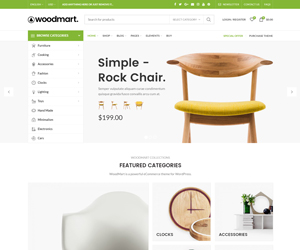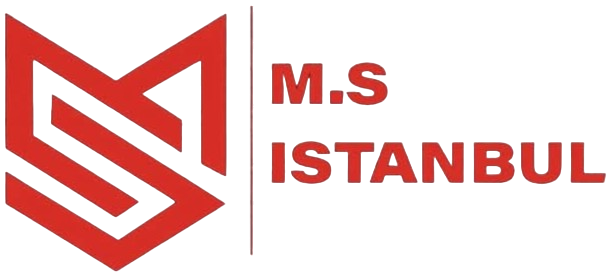Unlocking Creativity Through Adaptive Speed Settings in Aviamasters
Introduction: Connecting Creativity, Speed, and Gamified Learning
Building upon the foundational idea of how How Speed Modes in Aviamasters Enhance Learning and Play, this exploration delves into the nuanced role of adaptive speed settings in fostering creativity. While traditional speed modes primarily optimize for efficiency or engagement, their potential to serve as catalysts for artistic experimentation and divergent thinking is often underappreciated. Recognizing that creativity thrives in environments that balance challenge with flexibility, adaptive speed settings emerge as vital tools to unlock innovative capacities within gamified educational platforms.
- Exploring the Concept of Creativity in Gamified Learning Environments
- The Science Behind Adaptive Speed Settings and Creativity
- Designing for Creativity: How Aviamasters’ Speed Settings Support Artistic Expression
- Overcoming Barriers to Creativity with Speed Adaptation
- Enhancing Collaborative Creativity through Adaptive Speed Features
- Measuring the Impact of Adaptive Speed on Creative Outcomes
- Future Directions: Personalization and AI-Driven Creativity Support
- Connecting Back: From Enhancing Learning and Play to Unlocking Creativity
Exploring the Concept of Creativity in Gamified Learning Environments
Defining Creativity within Interactive Educational Tools
In gamified learning environments like Aviamasters, creativity encompasses the ability to generate novel ideas, solve problems innovatively, and express artistic vision within a digital setting. Unlike rote memorization or straightforward skill acquisition, creative engagement involves divergent thinking—exploring multiple solutions and pushing boundaries. For example, users might experiment with unique color schemes, design unconventional flight paths, or develop new storytelling narratives during gameplay, transforming the platform from a mere learning tool into a virtual canvas for artistic expression.
How Traditional Speed Modes Influence Creative Engagement
Traditional fixed-speed settings, such as ‘fast’ or ‘slow,’ often limit the scope of creative experimentation. A rapid pace might overwhelm users, stifling the chance to explore ideas thoroughly, while overly slow speeds could dampen motivation or hinder spontaneous inspiration. For instance, a user attempting to craft a detailed scene may feel constrained by a preset speed that either rushes their workflow or causes boredom. Consequently, rigid speed modes can unintentionally suppress the creative flow critical for artistic development within digital environments.
The Importance of Flexible Settings in Fostering Innovation
Flexibility in speed controls serves as a catalyst for innovation by allowing users to tailor their experience dynamically. When users adjust speed to match their creative rhythm, they can experiment more freely, iterate rapidly, or slow down to refine details. This adaptive approach aligns with concepts from psychology that emphasize the importance of flow states—where challenge and skill are balanced—leading to heightened motivation and inventive output. In Aviamasters, such flexibility empowers users to transcend conventional limits, fostering a culture of continuous creative exploration.
The Science Behind Adaptive Speed Settings and Creativity
Cognitive Load Theory and Managing Mental Resources
Cognitive Load Theory suggests that working memory has limited capacity. When tasks are too complex or poorly paced, mental resources become overwhelmed, impairing creative thinking. Adaptive speed settings in Aviamasters help optimize cognitive load by allowing users to control pacing, reducing frustration or fatigue. For example, a user working on a complex animation can slow down the process, giving their brain space to connect ideas and experiment without cognitive overload.
How Variable Pacing Encourages Experimentation and Divergent Thinking
Variable pacing facilitates experimentation by enabling users to switch between rapid iteration and deliberate reflection. Divergent thinking—the process of generating multiple solutions—is enhanced when users are not constrained by rigid timeframes. For example, an artist designing a new character can accelerate through initial sketches, then slow down to add fine details, fostering a rich creative process that adapts to their evolving needs.
Brain Science Insights into Speed Adjustments and Creative Flow
Research in neuroscience indicates that optimal creative flow occurs when the brain operates within a specific arousal and attention range. Speed adjustments influence neural activity by modulating focus and relaxation levels. Slower speeds can promote deeper processing and insight, while faster speeds might activate the brain’s associative networks, encouraging novel connections. In Aviamasters, this means users can fine-tune their environment to sustain a state of flow conducive to innovation.
Designing for Creativity: How Aviamasters’ Speed Settings Support Artistic Expression
Customizable Speed Options to Match Individual Creative Rhythms
Aviamasters offers a spectrum of speed controls—from granular adjustments to broader presets—allowing users to align the platform with their unique creative tempos. For example, a user passionate about detailed craftsmanship can slow the pace to focus on nuances, while another seeking rapid prototyping can accelerate to explore multiple ideas swiftly. This customization fosters a sense of agency, essential for sustained creative engagement.
Case Studies of Users Leveraging Speed Flexibility for Artistic Development
Consider Maria, an aspiring game designer who uses adaptive speed to alternate between rapid sketching and slow, meticulous refinement. By adjusting her workflow dynamically, she produces more innovative concepts and gains confidence in her artistic abilities. Similarly, Jake, a digital animator, utilizes faster speeds during initial storyboarding and slows down for detailed coloring, illustrating how flexible speed settings directly support various creative stages.
Integrating Creative Tasks with Adaptive Speed for Enhanced Output
Combining creative challenges with adjustable pacing allows users to optimize their workflow. For instance, when tackling a complex animation sequence, a user might start at a moderate speed to plan scenes, then slow down for intricate detailing. Such integration enhances productivity while maintaining creative richness, demonstrating the value of adaptive speed as a tool for artistic growth.
Overcoming Barriers to Creativity with Speed Adaptation
Addressing Frustration and Stagnation through Speed Adjustments
Creative stagnation often results from frustration with rigid workflows. Adaptive speed controls in Aviamasters enable users to modify pacing when encountering obstacles—slowing down to troubleshoot or speeding up to regain momentum. For example, a user frustrated by slow rendering times can temporarily accelerate processes, reducing discouragement and fostering resilience.
Balancing Challenge and Mastery to Maintain Creative Momentum
The concept of the Zone of Proximal Development suggests that optimal learning and creativity happen when tasks are challenging yet achievable. Speed flexibility helps maintain this balance by adjusting difficulty levels dynamically. Artists can increase speed for initial ideation and decrease it for refinement, sustaining motivation and preventing burnout.
Preventing Cognitive Fatigue with Optimal Speed Modulation
Prolonged focus at a fixed pace can lead to cognitive fatigue, diminishing creative capacity. Adaptive speed settings allow users to vary their engagement, incorporating periods of rest or slower processing. For example, alternating between quick idea generation and slow detailed work helps preserve mental resources and enhances overall creative productivity.
Enhancing Collaborative Creativity through Adaptive Speed Features
Synchronizing Speed Settings in Multiplayer or Team Environments
In team projects within Aviamasters, synchronized speed adjustments facilitate smoother collaboration. Teams can agree on pacing that accommodates diverse working styles, ensuring everyone remains engaged. For example, a collaborative storytelling session might involve alternating speeds to highlight key moments, fostering shared creative momentum.
Facilitating Shared Creative Projects with Flexible Pacing
Flexible pacing allows team members to contribute at their optimal speeds, enhancing the quality and diversity of ideas. By dynamically adjusting speed during joint tasks—such as co-creating digital murals or animations—participants can better integrate their individual strengths, leading to richer collaborative outputs.
Building a Community Around Adaptive, Speed-Driven Innovation
Communities centered on adaptive speed features promote peer learning and shared innovation. Users exchange tips on customizing speed for various creative challenges, fostering an environment where experimentation and support thrive. Such ecosystems amplify the platform’s potential as a hub for creative growth.
Measuring the Impact of Adaptive Speed on Creative Outcomes
Metrics for Assessing Creative Engagement and Productivity
Quantitative metrics such as the number of creative iterations, diversity of outputs, and time spent on tasks can gauge engagement. Qualitative assessments, including user satisfaction and originality, provide deeper insights. For instance, tracking how adjusting speed correlates with innovative project submissions can reveal its influence on creative growth.
Feedback Loops Between User Experiences and Speed Customization
Implementing feedback mechanisms allows users to refine their speed settings based on their creative experiences. Surveys and usage analytics help identify optimal configurations, fostering a personalized environment that continually adapts to evolving creative needs.
Long-Term Benefits of Adaptive Speed Settings for Creative Skill Development
Over time, flexible speed controls contribute to the development of self-regulation skills and artistic mastery. Users learn to recognize their optimal pacing, leading to sustained innovation and confidence. This adaptability nurtures a lifelong creative mindset, extending beyond the platform into broader artistic pursuits.
Future Directions: Personalization and AI-Driven Creativity Support
Integrating AI to Suggest Optimal Speed Settings for Creative Tasks
Artificial Intelligence can analyze user behavior and suggest tailored speed adjustments to maximize creative flow. For example, AI might recommend slowing down during complex design phases or speeding up during brainstorming, effectively acting as a creative coach embedded within Aviamasters.
Adaptive Learning Algorithms That Evolve With User Creativity Patterns
Machine learning enables the platform to adapt over time, recognizing individual patterns and preferences. As users develop their skills, speed settings evolve to challenge and support them appropriately, fostering continuous artistic growth.
Potential for Virtual Environments That Dynamically Foster Innovation
Future virtual environments could leverage real-time data to create dynamic, responsive spaces that adapt to users’ creative moods and needs. Such environments could orchestrate pacing, stimuli, and collaborative cues to maximize innovation potential seamlessly.
Connecting Back: From Enhancing Learning and Play to Unlocking Creativity
As demonstrated, the flexible speed controls introduced in Aviamasters serve a dual purpose—enhancing both educational outcomes and creative expression. By understanding and harnessing the science behind pacing and cognition, developers and users can transform digital environments into fertile grounds for innovation.
“Adaptive speed settings are not merely a feature—they are a bridge to deeper engagement, richer creativity, and lifelong skill development.”
Ultimately, fostering an environment where learning, play, and artistic exploration intersect requires thoughtful integration of flexible pacing tools. As technology advances, the potential for personalized, AI-supported creative spaces will only expand, opening new horizons for innovation and self-expression in digital education platforms.














